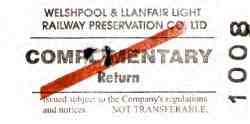
Our complementary return ticket!

Our complementary return ticket!
The extremely picturesque nature of the route undoubtedly helped in the development of a preservation society, which was actively working engines over the route, even before the final lifting of the track through the town section to the main line in 1963. A mammoth task lay ahead in reopening the line to it's present extent, including the re-building of the bridge over the River Banwy, which was almost washed away, and the major civil engineering project involved in the realignment of the line to the new terminus at Raven Square, which was completed, although not in it's present form in 1981.
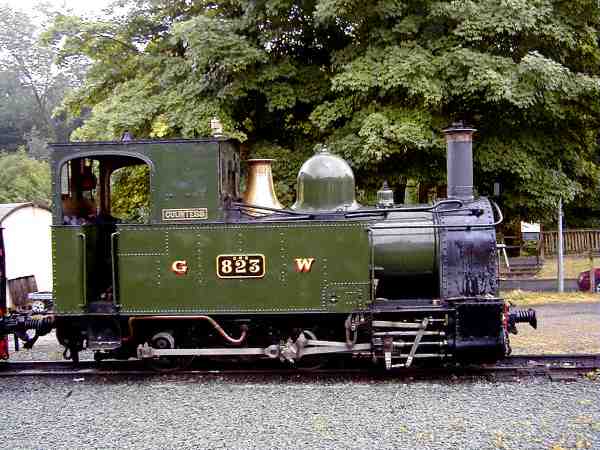
The Countess, 1902, one of the line's original locos.
No.14 Built in Leeds in 1954 for the Sierra Leone Railway, she was rescued and shipped back to Britain in 1975.
No.14 taking in water.
No.8, Dougal 1946, built for the Provan Gas Works, with No.7, Chattenden, a 1949 diesel in the background.
One of the 1900, Austrian Tyrol, Zillertalbahn carriages, now restored to splendid condition.
Countess being shunted by a diesel.
No.12, built for the Antiguan sugar trade in 1927, she is now a static exhibit at Llanfair Caereinion, awaiting a new boiler and general restoration.
Crossing the restored bridge over the Banwy on our return trip.
A view of a reversed No.14, at full speed pulling us back to Welshpool.


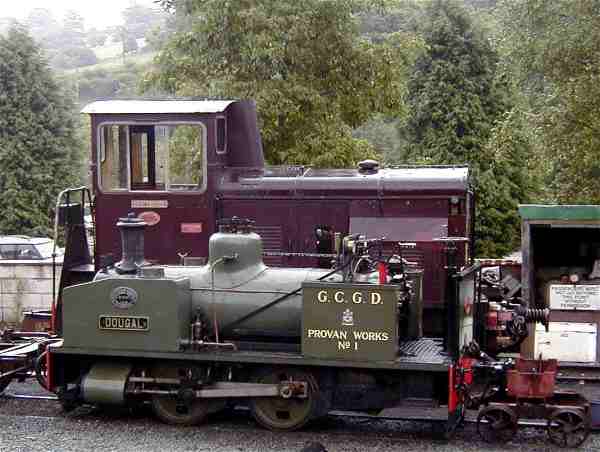


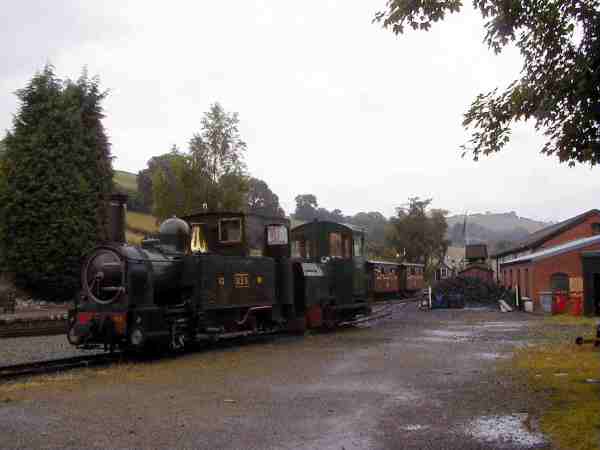
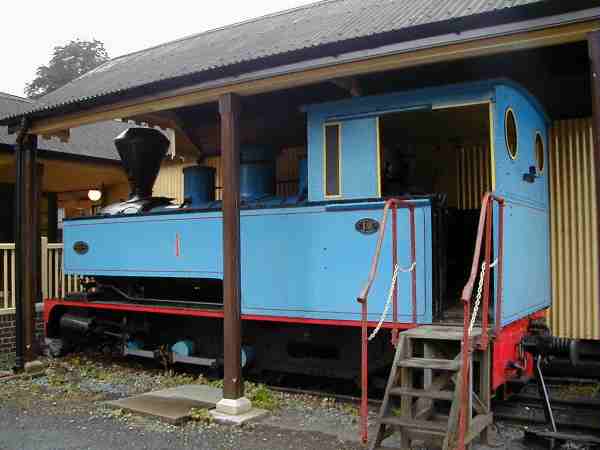


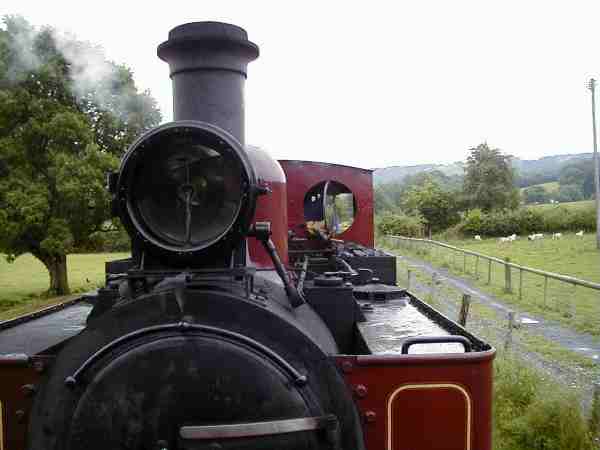
A SVHS video, in AVI format taken at this time, will follow shortly.